We at China.Table believe deeply in astrology of course – at least the Chinese variety. After all, what influences the thinking of so many people cannot be wrong. The first babies that will be born on Sunday in the Year of the Rabbit will definitely bring completely different characteristics into the world than the last tigers of the old year on Saturday. According to the Far Eastern horoscope, Rabbits are polite, cautious, hesitant, devoted, generous and diligent.
This year we again dare to look ahead to the events in the sign of the Rabbit. Amelie Richter and Felix Lee have gathered the most important astrological trends. What many Chinese believe is good to know, after all.
Throughout Chinese culture, people are known to celebrate the Spring Festival with their families. This year, after the pandemic hiatus, hundreds of millions have once again made their way to visit their loved ones. The largest world’s largest travel event is once again underway.
Normally, this would also be the time for international travel, but the December opening happened too close to the holiday. People do not yet have new passports and the travel sector does not yet offer enough flights. However, a new international boom is expected for the fall, analyzes our team in Beijing. Chinese tourists are highly welcome: They spend the most money.
Today, Johnny Erling focuses on a supposed infernal rabbit designed by the legendary artist Huang Yongyu for the Year of the Rabbit stamp. Huang’s allusions have once again sparked a heated discussion.
In the coming days you will not only find a rabbit in the moon, but also in our equally round logo. After the cow and the tiger, it is the third time China.Table includes the zodiac symbol in its identity.

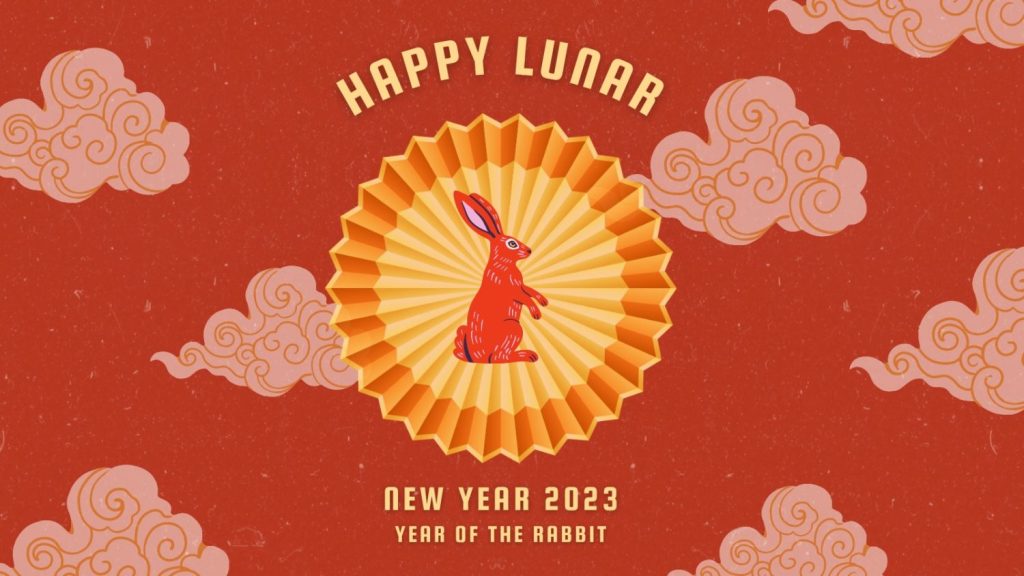
A turbulent and conflict-ridden year lies behind us. No wonder. Tigers are considered quick-tempered, aggressive and unpredictable. And that is exactly what the Year of the Tiger 2022 was like, with Putin’s war of aggression against Ukraine, Xi Jinping’s shift from zero to full-Covid, and the economic and social upheavals in many countries around the world.
The good news is that the upcoming Year of the Rabbit, which begins on Sunday night, promises to be more relaxed. After all, according to Chinese astrology, the sign of the Rabbit stands for peace, prosperity and longevity. So far, the Rabbit-born include those born in 1927, 1939, 1951, 1963, 1975, 1987, 1999 and 2011.
Each of the twelve zodiac signs is also associated with the elements wood, water, earth, fire and metal. And because 2023 is a water year, the year promises to be particularly flowing, and thus also harmonious and less abrupt. So the year of the Water Rabbit comes just in time.
After the rough pandemic year, which hit the people of China with a delay, but all the more massively, many people long for exactly these traits. In Chinese astrology, water embodies sensitivity and flexibility. Many therefore hope for a smooth transition back to normality.
The abrupt change from a zero to a full-Covid policy has been less smooth. A gradual opening would have allowed everyone to better adapt to the changes. However, the current leadership seems to practice the exact opposite: There is no more testing, restrictions are virtually nonexistent, nor is there a mask mandate. The virus can spread unchecked at the Spring Festival, of all places. But who knows, maybe the leadership will come to its senses during the New Year’s holidays and approach the opening a little more cautiously. At least more reliable infection figures would certainly be helpful.
As far as geopolitics is concerned, Hong Kong astrologer Raymond Lo expects the conflict between Russia and Ukraine to subside, resulting in less tension between East and West. “However, it does not mean conflict and war will totally disappear,” the astrologer stresses. Rather, he believes, fights may turn underground and secretive. He mentions assassinations, coups d’état, protests and terrorist activities. Lo refers to one of the most famous assassinations in history: the assassination of President John F. Kennedy in 1963. That was also the year of the Water Rabbit.
On the other hand, the majority of experts surveyed for the annual outlook by the Merics China Institute are less optimistic about the year ahead. As many as 55 percent of those surveyed expect relations between the People’s Republic and the EU and other Western countries to deteriorate as a result of Beijing’s continued support for Putin in the Ukraine war. Consequently, China and Russia will deepen their relations.
And significant deterioration is also expected in economic relations between the EU and China. 81 percent of respondents expressed pessimism about the situation of EU citizens working in China. But perhaps this is only a relative view. It could not get any worse than 2022, said EU Chamber of Commerce head Joerg Wuttke at the presentation of the Merics survey. The Rabbit Year can only get better, he believes.
Sameer Goel, head of Deutsche Bank’s macro strategy for Asia-Pacific, advises investors to be calm and patient, typical traits of the rabbit, in order to be agile at the decisive moment. He quotes a Chinese proverb: “He who rides a tiger is afraid to dismount.” The global economy over the past Year of the Tiger, he says, has been very turbulent. High inflation, which resulted in the most rapid tightening of interest rate policy in decades; geopolitics, which in turn drove energy and commodity prices to record highs; and China’s zero-Covid policy, which at times paralyzed the Chinese economy.
“We believe 2023 will be a year of transition to more normalcy after the bust and boom pattern of the past few years,” says financial markets analyst Goel. “After the volatility of the past year, we will need patience, along with agility, to navigate through this year of transition.”
From snarling tiger to fluffy water rabbit – this could also be good for the international societies of many countries. A little breathing room is in order. The year of transition could also bring societal debates back to calmer waters. There was plenty to discuss last year. Rabbits, according to the description of the zodiac signs, are known for emotional intelligence, empathy and sensitivity. More empathy could certainly not hurt when tackling the problems that affect everyone.
The Year of the Rabbit could end up being something of a palate cleanser at a wine tasting. A break, unexciting and with enough room for creativity. Even if it might seem logical to expect a lot of new births in the Year of the Rabbit, that would be wrong. According to studies, high-birth years tend to be dragon years, at least in Hong Kong. So the trend toward a declining population will probably not be stopped by the water rabbit either. As sensitive as the rabbit is, it is also said to tend to be over-sensitive. To avoid conflicts, he prefers to keep his real opinion to himself – and thus perhaps lets things boil beneath the surface.
One well-known rabbit would probably wish for less excitement in 2023: US actor Johnny Depp, born in 1963. He was in the headlines in the past tiger year, especially with the lawsuit against his ex-wife Amber Heard. Other well-known rabbits are Brangelina: US actor Brad Pitt was born in 1963, actress Angelina Jolie in 1975. But geniuses such as Albert Einstein (1879) and soccer superstar Lionel Messi (1987) were also born in the year of the hopping rodent.
Singer Madison Beer was born in the Rabbit year 1999, and Youtuber Ryan Kaji is one of the youngest Rabbits. He was born in 2011 and is probably known mostly to parents: With the channel “Ryans ToysReview” he rose to fame with unboxing and review videos of toys. Among Chinese celebrities, for example, Emperor Qianlong (1711) is a rabbit, so is the famous businessman and founder of Soho China, Pan Shiyi (1963). Actress Wang Zi Wen is a rabbit from 1987, and actor and wushu fighter Jet Li is a water rabbit from 1963.
May the Water Rabbit bring a little peace for the coming months. After all, the upcoming 2024 wooden dragon is said to be a curious and insatiable party animal. Felix Lee/Amelie Richter
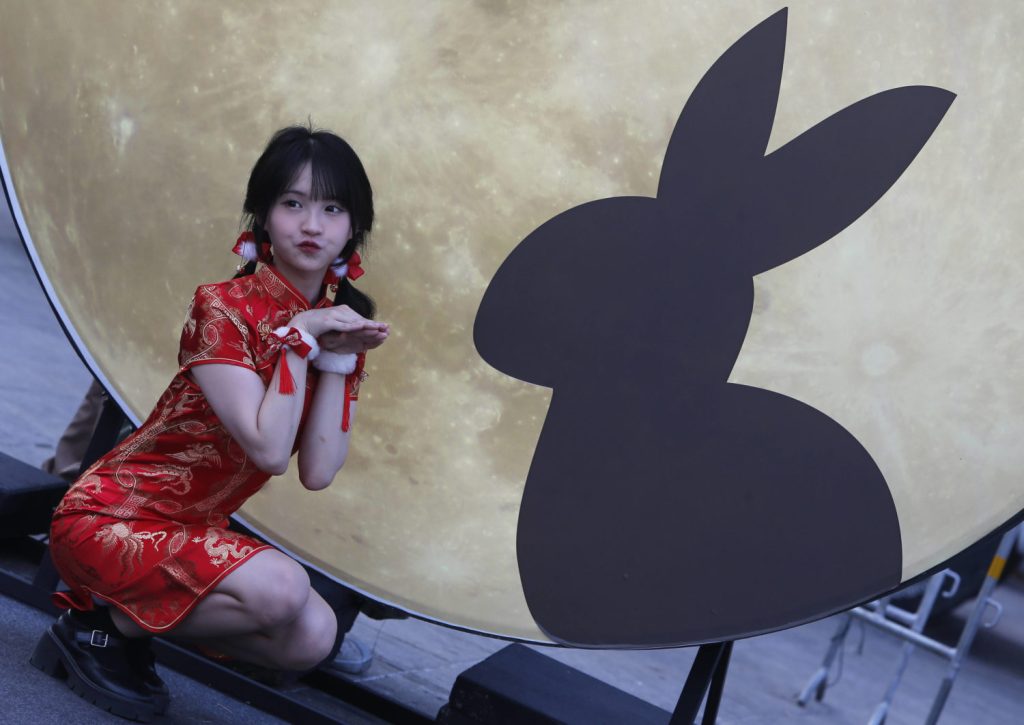
When Beijing recently announced that after three years of pandemic, the Chinese were finally allowed to travel to other countries again without major hurdles, a fierce debate broke out in the vacation paradise of Thailand. On the one hand, the country’s economy is dependent on guests from the People’s Republic; on the other hand, the government had concerns about the Covid wave in China. In the end, the interests of the travel industry prevailed. Around eleven million visitors from China flocked to Thailand in the year before the pandemic. This makes it by far the most popular foreign vacation destination for Chinese, followed by Japan, Vietnam and South Korea.
Just like Thailand’s hoteliers, most of the global tourism sector hopes for a boost from the return of Chinese guests. Their desire to travel is strong. “My daughter is 13 years old now. We thought she was too young for long trips before the pandemic. Now we want her to finally see the world,” said a Beijing woman who plans to travel with her whole family as soon as possible.
What is also clear, however, is that there will not yet be a large travel wave abroad for the upcoming New Year’s celebration in the next few days. Many Chinese must first apply for new passports, which has only been possible since Jan. 8. For many destinations, visas are also required, and there is not enough time for that either. Above all, however, there are “still far too few flights at present,” reports an employee of a travel agency. So over the holidays, the domestic tourism industry is likely to benefit first. The special administrative regions of Hong Kong and Macau are also very popular travel destinations.
Beginning in the second quarter, when more flights are available again, observers expect a surge in the number of Chinese outbound travel. A veritable explosion is even predicted for late September and October. The Mid-Autumn Festival then transitions directly into the “golden week,” a chain of days off around China’s National Day on Oct. 1. If bridging days are taken off, Chinese people can travel for ten days in a row.
In 2019, the Chinese still traveled abroad 154 million times, making them the global travel world champion. By comparison, US citizens made around 100 million trips abroad in the same year and spent significantly less than the Chinese, at $1,363 per capita. The Chinese spent an average of $1,852 on their vacations.
The total of around $255 billion Chinese spent on overseas travel in 2019 largely disappeared during the three pandemic years. In 2021, only 8.5 million Chinese traveled abroad. That was even before China’s government further tightened outbound travel regulations last year.
Although not a single European country made it into the list of the ten most popular destinations for Chinese before the pandemic, the number of visitors increased noticeably. Germany and Neuschwanstein Castle were among the must-see destinations for many Chinese tourist groups, who often visited several European countries in just one week.
In Hamburg or Dusseldorf, boutiques hired extra staff proficient in Chinese to cater to the needs of customers from the Far East. These language skills will probably soon come in handy again. Joern Petring
Chinese writer and dissident Liao Yiwu, who lives in exile in Berlin, has called on Western leaders to pursue policies shaped by values and ideals. As this year’s speaker at the Stuttgart Future Speech, he also warned of the consequences of the continued rise of the Chinese economy.
The West has benefited from China’s growth, “but if this tyranny is allowed to continue to grow, then everyone will end up in hell.” In the long run, he believes that it would be a good idea for China to break apart and instead consist of several smaller countries working well together, Liao said. The writer is thus touching on a political taboo. Geographical unity and national integrity are identity-forming national goals of the People’s Republic.
The Stuttgart Future Speech takes place every two years and is an initiative of the Literaturhaus Stuttgart, the International Center for Cultural and Technological Research at the University of Stuttgart and the Evangelisches Bildungszentrum Hospitalhof Stuttgart.
In his speech, Liao Yiwu also recounted his time in Chinese prisons, among other things. In 1989, he published the poem “Massacre” in response to the suppression of the Tiananmen Square protests. He was subsequently imprisoned for four years. The writer has lived in Germany for more than ten years. jul
Early test runs for a Hyperloop train in Datong, Shanxi have been successful, the South China Morning Post reported. The two-kilometer test track reportedly reached 50 km/h and covered 210 meters several times.
During the test, critical components such as a superconducting magnet, electronics and AI safety controls worked as planned. The train is being developed by engineers at the state-owned China Aerospace Science and Industry Corporation (CASIC). The successful test runs will now enable experiments at higher speeds. The goal is to accelerate the capsules to up to 1000 km/h in a vacuum tube to transport people and goods.
The project has been ongoing for a decade. It is similar to Elon Musk’s Hyperloop project. Currently, the fastest high-speed trains reach 350 km/h. The Transrapid in Shanghai accelerates up to 430 km/h for short periods. A maglev train from the Chinese state-owned CRRC is said to be able to accelerate up to 600 km/h; it is currently being tested. According to the recently deceased Transrapid planner Hartmut Heine, the idea of magnetic trains in tubes and their use in China are quite realistic. jul
State media on Thursday celebrated the election of President Xi Jinping as Jiangsu Province’s deputy to the National People’s Congress. “Hundreds of millions of people love their leader!” Qiushi magazine quoted delegates at the local Jiangsu People’s Congress as saying. Earlier, Xi was elected unanimously. State media called his election “historic,” despite the expected outcome. There reportedly had been thunderous applause. The NPC is China’s controlled parliament.
Xi skipped his usual tour of provinces before the New Year this year. Instead, he gave a speech online with the usual set pieces about his policies and spoke with various social groups via video. He even inspected a military unit via video link. fin
The Taiwanese government has resigned in unison to make way for new ministers. Premier Su Tseng-chang asked President Tsai Ing-wen to accept his resignation on Thursday. The Democratic Progressive Party (DDP) thus reacts to significant defeats in the regional election in November. A new government line-up would ideally be decided after the Spring Festival vacation. The 75-year-old Su is not expected to run for office again. fin

Following the twelve-cycle zodiac, the Chinese celebrate 2023 as the New Year of the Rabbit. Under the traditional lunar calendar, it begins at midnight on Sunday. In honor of the rabbit, China’s world-famous artist Huang Yongyu was allowed to design two stamps for China’s postal service. Outraged bloggers raised a virtual storm. They accused Huang of having malicious intentions.

Because this old master of Chinese painting, versatile art and satire – he turns 99 this year – delivered two caricatures. His first hopping creature seemed to have emerged from the underworld: A child’s worst nightmare with blue fur and glowing red eyes. A rabbit with human hands, holding pen and paper, ready to settle scores with China. At least that is what one blogger believed, who posted an angry message under the colorful pseudonym “Orchid Garden from Zhejiang” (严州兰苑): “Toxic! …looks like a rat making a new Coronavirus in the lab. In one hand it holds the pen of the infernal accountant Panguan and in the other the list of life and death. Shockingly, the number is 120!” (“毒!…一只在实验室做新冠病毒试验的老鼠~一只手拿着判官笔一只手拿着生死簿还有令人心惊胆战的120!”).
Post offices started selling the stamps on Jan. 5. The online community has been bashing Huang’s “ugly” bunny ever since. To them, it is a demon-like creature, an “Omicron rabbit” (奥密克戒兔), who zigzags around Pandemic-stricken China. Conspiracy theories point to the stamp’s face value, 1.20 yuan. 120, however, is China’s emergency telephone number. Fittingly, Huang’s second rabbit design also appears to be filled with allusions. In the foreground, it shows three cute rabbits running around in a circle. But in the background hides the moon rabbit Yutu, which according to the legend (玉兔捣药) stamps medicines.
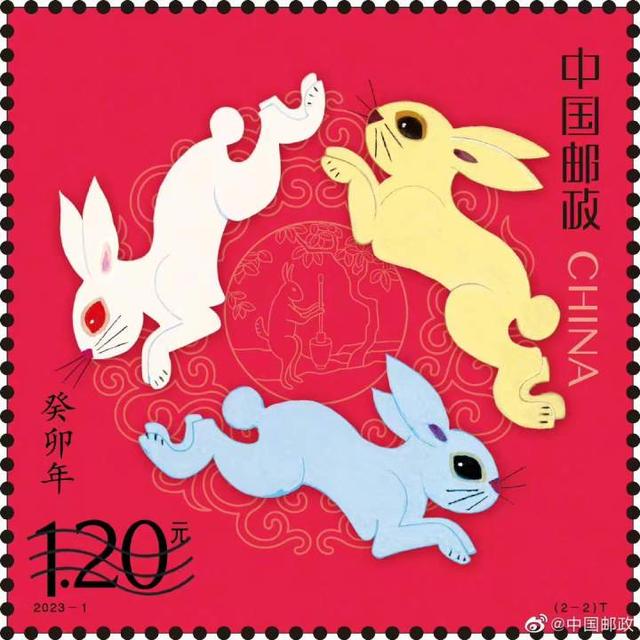
But logic won’t get you anywhere here. The postage for a domestic letter is 1.20 yuan. Also, China’s mourning color is not blue, but white. Huang, the artist, responded with a smile in a video clip, saying that drawing rabbits is no big deal. Anyone could do it. “I drew them to make everyone happy.” (画个兔子邮票是开心的事 …让大家高兴). He said the only allusion is in the words for “blue rabbit.” They are homophones – pronounced the same, but written with different characters – for the New Year’s wish for “great plans” (蓝色兔子谐音 “宏伟蓝图”).
The grotesquely comical online dispute started by a minority only fueled the real run for the stamps by the majority. Stamp fans waited in line up to three days before the issue date – and rallied their families to take turns standing in line. They sensed the proverbial stock of the common man.
Post offices often sold their stock within the first hour. The online shopping site Taobao reported 200,000 orders. Supplies there also sold out quickly, although the postal service was prepared: It printed the stamps in record quantities of 39.5 million each.
The high demand was sparked by a combination of superstitions, coupled with the obsession to make a bargain and Huang Yongyu’s fame. The 2023 Rabbits are the third zodiac stamp designed by him for China’s postal service since it first issued special Year of the Monkey stamps in 1980.
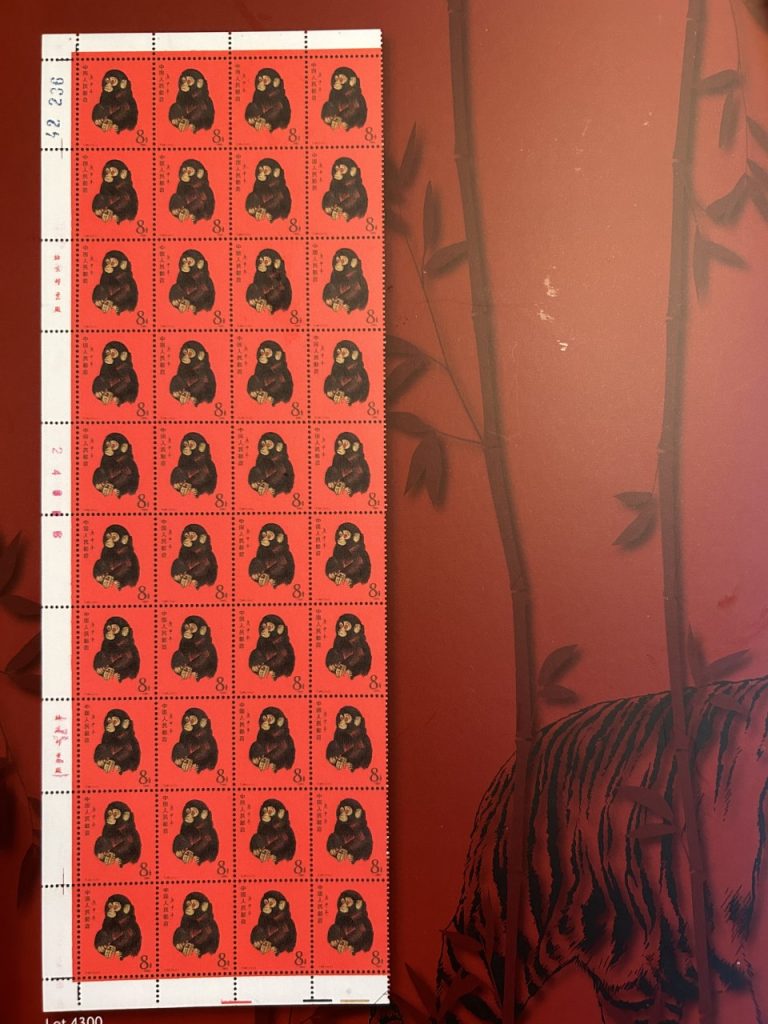
Since then, every Chinese child has grown up with the story of the red monkey stamp that Huang drew for China’s postal service in 1980. It became the Chinese equivalent of the blue Mauritius stamp. With a face value of eight fen – the postage for a domestic letter at the time – it became the most expensive postal stamp in the People’s Republic. Its current market price is well over 1,000 euros, even though five million copies were issued in 1980.
One German chief engineer who worked on the early Wuhan project of a large cold rolling mill imported from Duisburg also profited from the absurd hype. In the Yangtze city, he spent his free time buying Chinese stamps by the sheet with his son until 1984. In November 2022, his son had the collection, which had been locked away for decades, auctioned by the Felzmann auction house, including a sheet of 40 monkey stamps. His father bought them in 1980 for 3.20 yuan. The bid started at 25,000 euros. The winning bid came in at 39,000 euros.
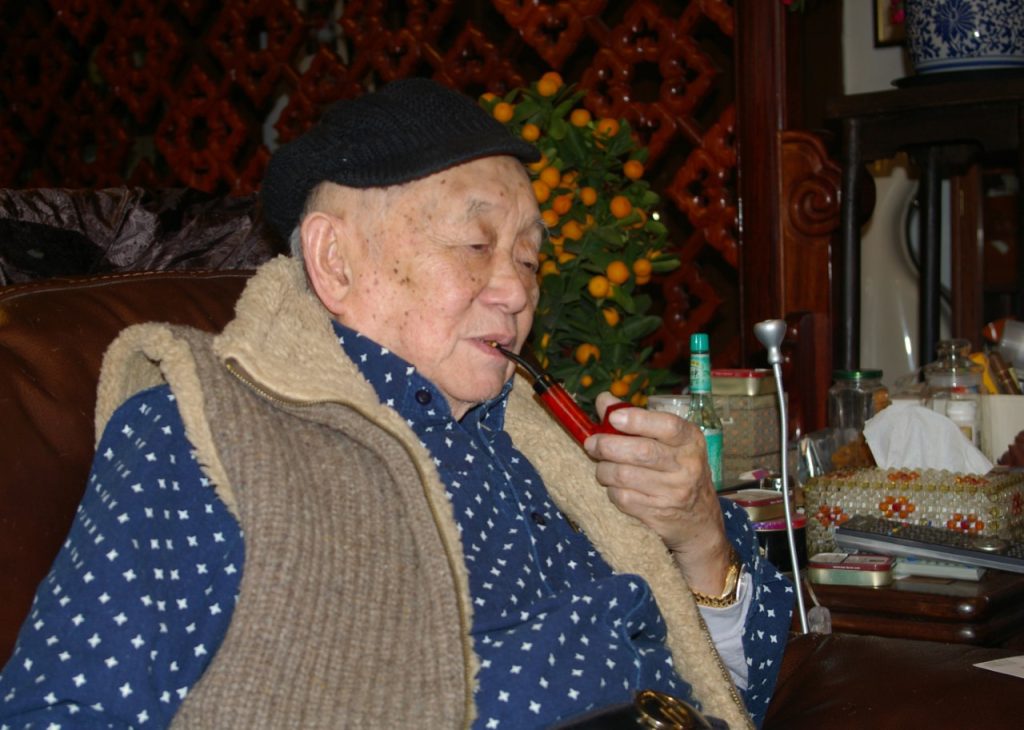
Huang painted his second New Year’s stamp in 2016. It was once again the Year of the Monkey. He painted a peach, the symbol of long life, referring to the legend of the Monkey King rebel Sun Wukong. According to legend, he dared to steal a peach from the Heavenly Garden. For the second design, Huang drew a monkey with two infants. It was his plea against China’s one-child policy. “Everyone is after these stamps as if they were monkeys themselves,” Xinhua disapprovingly wrote at the time.
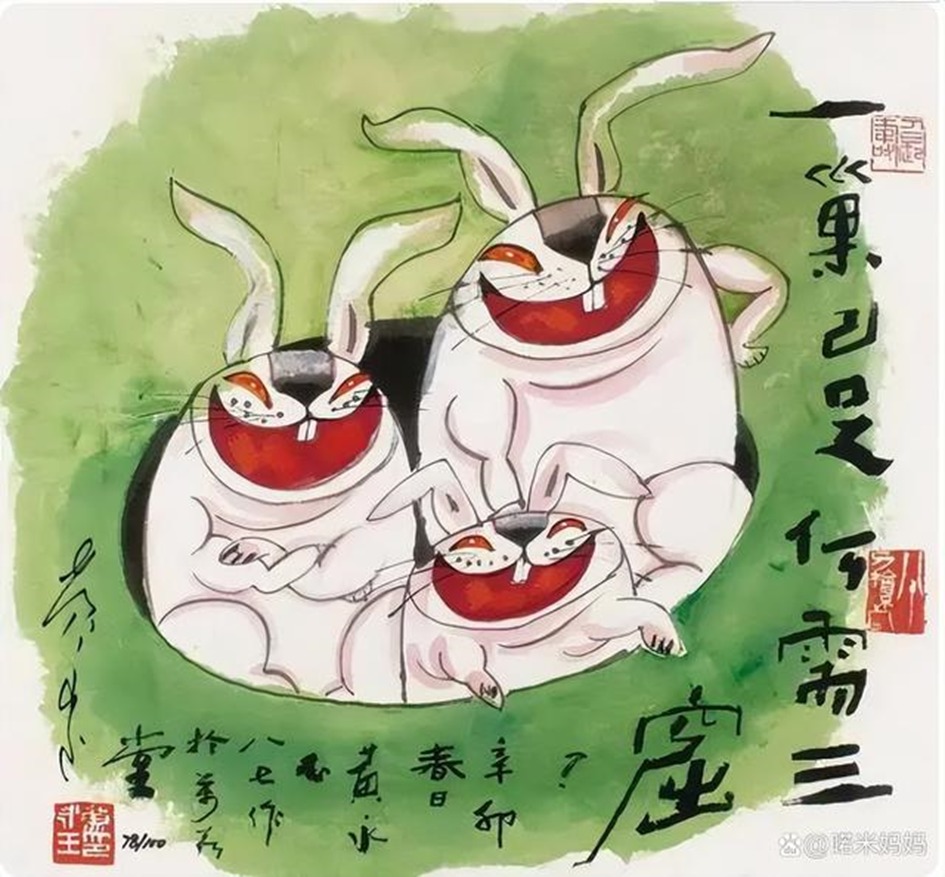
When I visited Huang in his Beijing studio twelve years ago – for the 2011 Year of the Rabbit – he showed me a picture he had drawn for himself. Inspired by the saying that a crafty rabbit has three burrows, he had drawn three rabbits happily sitting in just one burrow. “We don’t need so many places to hide in this country anymore,” Huang said mischievously. When I asked him if he believed China’s society was well on its way to normalcy, he asked a rhetorical question in return: “If it were so, would we still have to hang a portrait of Mao on Tiananmen Gate?”
This much skepticism did not stop him from creating huge artworks for the government, such as a 24-meter-long and 7-meter-high mural depicting rivers and mountains. It can be found in the reception room behind Mao’s marble bust in the huge Mao Mausoleum on Tiananmen Square.
But he refuses to be used for party propaganda or by system critics. Recently, an alleged protest photo of him against Beijing’s pandemic response appeared online. It shows him with his drawing of a hand flipping Beijing off. The writing next to it says, “The people are upset!” (中国人活得有气).

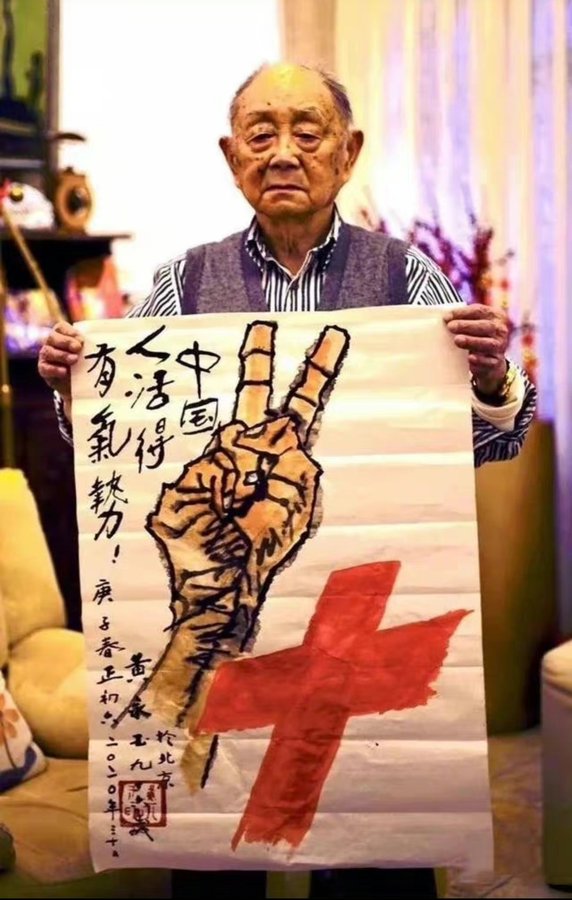
The photo was fake. A finger and a character were painted over. On the original drawing made after the COVID-19 outbreak in Wuhan, two fingers show the Victory sign V. The characters read, “The people are full of vigor!” (中国人活得有气势).
Yet Huang would have plenty of reasons to be bitter. He survived brutal persecution – in the early years of the traumatic Cultural Revolution at the hands of the Red Guards and seven years later at the hands of Mao’s scheming comrades, including his wife Jiang Qing.
In order: In 1966, Huang taught at Beijing’s College of Fine Arts as its youngest professor. Cultural Revolutionaries branded dean Ye Qianyu, painter Lu Gongliu, and Huang as counterrevolutionaries and traitors to Mao. On August 23, 1966, all three artists were bloodily flogged after a public tribunal. Huang survived 242 lashes with a leather belt.
Years of farm work in a cadre school in the province of Hebei followed. In 1973, Huang and other painters were unexpectedly brought back to Beijing from exile – by then-Premier Zhou Enlai. It is now known that it happened on Mao’s orders. After Nixon’s visit in 1972, Beijing wanted to present a friendlier image to other Western guests. Huang and other painters were supposed to paint a mural of the Yangtze River as an eye-catcher in the foyer of the newly built Beijing Hotel.
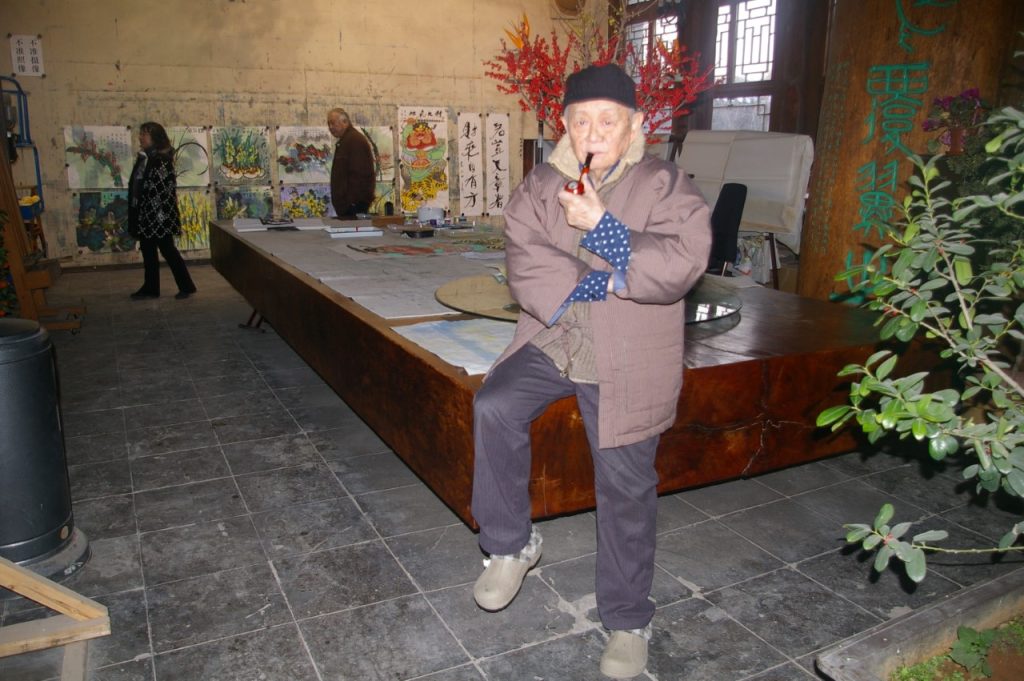
Huang, who was again allowed to visit acquaintances, drew one of his favorite motifs for a friend as a private gift – an ink painting of an owl with one eye closed and one eye open. This was the beginning of the infamous owl painting incident, of which Huang was the first victim. He was unaware that the friend had passed on the drawing and that it had been included in a Shanghai catalog of modern painting. Zhou Enlai wanted to once again internationally promote China’s art.
But it was this very catalog that became a target for a powerful group of ultra-leftist followers around Mao’s wife Jiang Qing, including then-Minister of Culture Yu Huiyong. He made himself a spokesman for renewed persecution of “black bourgeois paintings,” China’s word for degenerate art, which alleged enemies used to seek the end of Mao’s Cultural Revolution. On Feb. 15, 1974, the Beijing Art Gallery held a critique exhibition of “black painting” featuring 215 paintings by China’s eighteen best painters. Huang’s owl was by far the “blackest painting” among them. The owl holds one eye open and one closed. The artist allegedly used it to express his indifference and contempt for Mao and socialism.
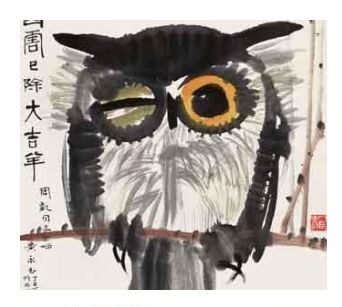
In a comprehensive biography of Huang Yongyu (李辉: 黄永玉传奇), Beijing’s cultural critic Li Hui investigated the intrigue at the time, which was actually supposed to bring down the loathed Premier Zhou Enlai. Huang obtained the original proposal for a campaign against black art with the written approval of all involved, including Mao’s wife, and had it framed and hung it in his bedroom, Li Hui writes. For Huang, it is satire, for others a piece of contemporary history from the Chinese madhouse of the late phase of the Cultural Revolution.
Of all people, the fickle dictator Mao brought the persecution of artists to an abrupt end. When he was shown the photos of the Black Painting Exhibitions in order to receive his “highest directive” to launch a nationwide culture war, the aging Mao could not see anything offensive. He even praised Huang’s owl. One closed eye and one open eye are common for owls, he said. A German painter had once presented him with such a painting. The campaign ended before it even began.
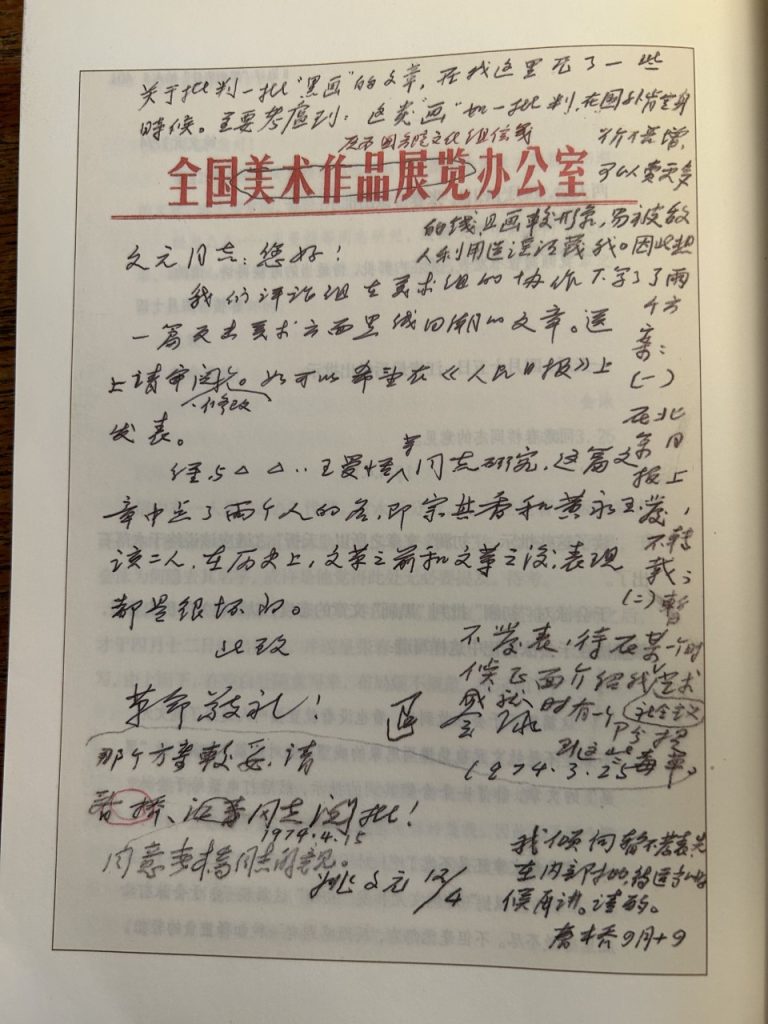
The current best profile on Huang Yongyu and a tribute to his satirical work was published by reporters in Renwu magazine (人物), Personalities, in 2022. They titled it, “As long as people can laugh, nothing is lost” (人只要笑,就没有输).
Huang can laugh. The Year of the Rabbit will be followed by the Year of the Dragon in 2024. He will then be 100 years old. His New Year’s drawing is something to look forward to. He revealed to Renwu reporters that he is preparing a century exhibition. If they see him motionless there, “pinch me and check. If I laugh, I’m still alive” (到时候胳肢我一下,看看我笑不笑 笑了,我就还活着).
Vera Langener took over the position as an analyst for Energy & Infrastructure in Asia & Europe at the German Investment and Development Company KfW DEG in January.
Is something changing in your organization? Why not let us know at heads@table.media!
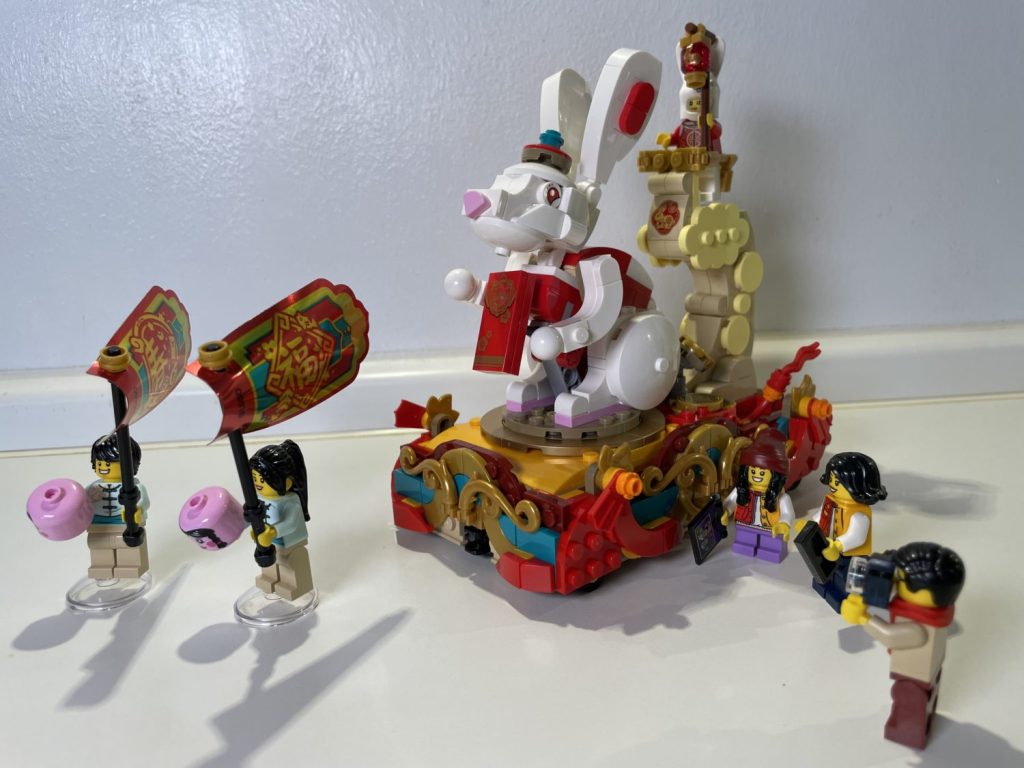
Lego is also celebrating the Year of the Rabbit. The Danish toy manufacturer has been presenting Chinese New Year for years – and naturally has its sights set on Chinese customers.
The People’s Republic is now the most important sales market, with almost half of the 850 Lego stores worldwide located there. But these sets are also popular collector’s items in Europe. The sets from previous years are offered on eBay and Amazon at three and four times the original price.
We at China.Table believe deeply in astrology of course – at least the Chinese variety. After all, what influences the thinking of so many people cannot be wrong. The first babies that will be born on Sunday in the Year of the Rabbit will definitely bring completely different characteristics into the world than the last tigers of the old year on Saturday. According to the Far Eastern horoscope, Rabbits are polite, cautious, hesitant, devoted, generous and diligent.
This year we again dare to look ahead to the events in the sign of the Rabbit. Amelie Richter and Felix Lee have gathered the most important astrological trends. What many Chinese believe is good to know, after all.
Throughout Chinese culture, people are known to celebrate the Spring Festival with their families. This year, after the pandemic hiatus, hundreds of millions have once again made their way to visit their loved ones. The largest world’s largest travel event is once again underway.
Normally, this would also be the time for international travel, but the December opening happened too close to the holiday. People do not yet have new passports and the travel sector does not yet offer enough flights. However, a new international boom is expected for the fall, analyzes our team in Beijing. Chinese tourists are highly welcome: They spend the most money.
Today, Johnny Erling focuses on a supposed infernal rabbit designed by the legendary artist Huang Yongyu for the Year of the Rabbit stamp. Huang’s allusions have once again sparked a heated discussion.
In the coming days you will not only find a rabbit in the moon, but also in our equally round logo. After the cow and the tiger, it is the third time China.Table includes the zodiac symbol in its identity.


A turbulent and conflict-ridden year lies behind us. No wonder. Tigers are considered quick-tempered, aggressive and unpredictable. And that is exactly what the Year of the Tiger 2022 was like, with Putin’s war of aggression against Ukraine, Xi Jinping’s shift from zero to full-Covid, and the economic and social upheavals in many countries around the world.
The good news is that the upcoming Year of the Rabbit, which begins on Sunday night, promises to be more relaxed. After all, according to Chinese astrology, the sign of the Rabbit stands for peace, prosperity and longevity. So far, the Rabbit-born include those born in 1927, 1939, 1951, 1963, 1975, 1987, 1999 and 2011.
Each of the twelve zodiac signs is also associated with the elements wood, water, earth, fire and metal. And because 2023 is a water year, the year promises to be particularly flowing, and thus also harmonious and less abrupt. So the year of the Water Rabbit comes just in time.
After the rough pandemic year, which hit the people of China with a delay, but all the more massively, many people long for exactly these traits. In Chinese astrology, water embodies sensitivity and flexibility. Many therefore hope for a smooth transition back to normality.
The abrupt change from a zero to a full-Covid policy has been less smooth. A gradual opening would have allowed everyone to better adapt to the changes. However, the current leadership seems to practice the exact opposite: There is no more testing, restrictions are virtually nonexistent, nor is there a mask mandate. The virus can spread unchecked at the Spring Festival, of all places. But who knows, maybe the leadership will come to its senses during the New Year’s holidays and approach the opening a little more cautiously. At least more reliable infection figures would certainly be helpful.
As far as geopolitics is concerned, Hong Kong astrologer Raymond Lo expects the conflict between Russia and Ukraine to subside, resulting in less tension between East and West. “However, it does not mean conflict and war will totally disappear,” the astrologer stresses. Rather, he believes, fights may turn underground and secretive. He mentions assassinations, coups d’état, protests and terrorist activities. Lo refers to one of the most famous assassinations in history: the assassination of President John F. Kennedy in 1963. That was also the year of the Water Rabbit.
On the other hand, the majority of experts surveyed for the annual outlook by the Merics China Institute are less optimistic about the year ahead. As many as 55 percent of those surveyed expect relations between the People’s Republic and the EU and other Western countries to deteriorate as a result of Beijing’s continued support for Putin in the Ukraine war. Consequently, China and Russia will deepen their relations.
And significant deterioration is also expected in economic relations between the EU and China. 81 percent of respondents expressed pessimism about the situation of EU citizens working in China. But perhaps this is only a relative view. It could not get any worse than 2022, said EU Chamber of Commerce head Joerg Wuttke at the presentation of the Merics survey. The Rabbit Year can only get better, he believes.
Sameer Goel, head of Deutsche Bank’s macro strategy for Asia-Pacific, advises investors to be calm and patient, typical traits of the rabbit, in order to be agile at the decisive moment. He quotes a Chinese proverb: “He who rides a tiger is afraid to dismount.” The global economy over the past Year of the Tiger, he says, has been very turbulent. High inflation, which resulted in the most rapid tightening of interest rate policy in decades; geopolitics, which in turn drove energy and commodity prices to record highs; and China’s zero-Covid policy, which at times paralyzed the Chinese economy.
“We believe 2023 will be a year of transition to more normalcy after the bust and boom pattern of the past few years,” says financial markets analyst Goel. “After the volatility of the past year, we will need patience, along with agility, to navigate through this year of transition.”
From snarling tiger to fluffy water rabbit – this could also be good for the international societies of many countries. A little breathing room is in order. The year of transition could also bring societal debates back to calmer waters. There was plenty to discuss last year. Rabbits, according to the description of the zodiac signs, are known for emotional intelligence, empathy and sensitivity. More empathy could certainly not hurt when tackling the problems that affect everyone.
The Year of the Rabbit could end up being something of a palate cleanser at a wine tasting. A break, unexciting and with enough room for creativity. Even if it might seem logical to expect a lot of new births in the Year of the Rabbit, that would be wrong. According to studies, high-birth years tend to be dragon years, at least in Hong Kong. So the trend toward a declining population will probably not be stopped by the water rabbit either. As sensitive as the rabbit is, it is also said to tend to be over-sensitive. To avoid conflicts, he prefers to keep his real opinion to himself – and thus perhaps lets things boil beneath the surface.
One well-known rabbit would probably wish for less excitement in 2023: US actor Johnny Depp, born in 1963. He was in the headlines in the past tiger year, especially with the lawsuit against his ex-wife Amber Heard. Other well-known rabbits are Brangelina: US actor Brad Pitt was born in 1963, actress Angelina Jolie in 1975. But geniuses such as Albert Einstein (1879) and soccer superstar Lionel Messi (1987) were also born in the year of the hopping rodent.
Singer Madison Beer was born in the Rabbit year 1999, and Youtuber Ryan Kaji is one of the youngest Rabbits. He was born in 2011 and is probably known mostly to parents: With the channel “Ryans ToysReview” he rose to fame with unboxing and review videos of toys. Among Chinese celebrities, for example, Emperor Qianlong (1711) is a rabbit, so is the famous businessman and founder of Soho China, Pan Shiyi (1963). Actress Wang Zi Wen is a rabbit from 1987, and actor and wushu fighter Jet Li is a water rabbit from 1963.
May the Water Rabbit bring a little peace for the coming months. After all, the upcoming 2024 wooden dragon is said to be a curious and insatiable party animal. Felix Lee/Amelie Richter

When Beijing recently announced that after three years of pandemic, the Chinese were finally allowed to travel to other countries again without major hurdles, a fierce debate broke out in the vacation paradise of Thailand. On the one hand, the country’s economy is dependent on guests from the People’s Republic; on the other hand, the government had concerns about the Covid wave in China. In the end, the interests of the travel industry prevailed. Around eleven million visitors from China flocked to Thailand in the year before the pandemic. This makes it by far the most popular foreign vacation destination for Chinese, followed by Japan, Vietnam and South Korea.
Just like Thailand’s hoteliers, most of the global tourism sector hopes for a boost from the return of Chinese guests. Their desire to travel is strong. “My daughter is 13 years old now. We thought she was too young for long trips before the pandemic. Now we want her to finally see the world,” said a Beijing woman who plans to travel with her whole family as soon as possible.
What is also clear, however, is that there will not yet be a large travel wave abroad for the upcoming New Year’s celebration in the next few days. Many Chinese must first apply for new passports, which has only been possible since Jan. 8. For many destinations, visas are also required, and there is not enough time for that either. Above all, however, there are “still far too few flights at present,” reports an employee of a travel agency. So over the holidays, the domestic tourism industry is likely to benefit first. The special administrative regions of Hong Kong and Macau are also very popular travel destinations.
Beginning in the second quarter, when more flights are available again, observers expect a surge in the number of Chinese outbound travel. A veritable explosion is even predicted for late September and October. The Mid-Autumn Festival then transitions directly into the “golden week,” a chain of days off around China’s National Day on Oct. 1. If bridging days are taken off, Chinese people can travel for ten days in a row.
In 2019, the Chinese still traveled abroad 154 million times, making them the global travel world champion. By comparison, US citizens made around 100 million trips abroad in the same year and spent significantly less than the Chinese, at $1,363 per capita. The Chinese spent an average of $1,852 on their vacations.
The total of around $255 billion Chinese spent on overseas travel in 2019 largely disappeared during the three pandemic years. In 2021, only 8.5 million Chinese traveled abroad. That was even before China’s government further tightened outbound travel regulations last year.
Although not a single European country made it into the list of the ten most popular destinations for Chinese before the pandemic, the number of visitors increased noticeably. Germany and Neuschwanstein Castle were among the must-see destinations for many Chinese tourist groups, who often visited several European countries in just one week.
In Hamburg or Dusseldorf, boutiques hired extra staff proficient in Chinese to cater to the needs of customers from the Far East. These language skills will probably soon come in handy again. Joern Petring
Chinese writer and dissident Liao Yiwu, who lives in exile in Berlin, has called on Western leaders to pursue policies shaped by values and ideals. As this year’s speaker at the Stuttgart Future Speech, he also warned of the consequences of the continued rise of the Chinese economy.
The West has benefited from China’s growth, “but if this tyranny is allowed to continue to grow, then everyone will end up in hell.” In the long run, he believes that it would be a good idea for China to break apart and instead consist of several smaller countries working well together, Liao said. The writer is thus touching on a political taboo. Geographical unity and national integrity are identity-forming national goals of the People’s Republic.
The Stuttgart Future Speech takes place every two years and is an initiative of the Literaturhaus Stuttgart, the International Center for Cultural and Technological Research at the University of Stuttgart and the Evangelisches Bildungszentrum Hospitalhof Stuttgart.
In his speech, Liao Yiwu also recounted his time in Chinese prisons, among other things. In 1989, he published the poem “Massacre” in response to the suppression of the Tiananmen Square protests. He was subsequently imprisoned for four years. The writer has lived in Germany for more than ten years. jul
Early test runs for a Hyperloop train in Datong, Shanxi have been successful, the South China Morning Post reported. The two-kilometer test track reportedly reached 50 km/h and covered 210 meters several times.
During the test, critical components such as a superconducting magnet, electronics and AI safety controls worked as planned. The train is being developed by engineers at the state-owned China Aerospace Science and Industry Corporation (CASIC). The successful test runs will now enable experiments at higher speeds. The goal is to accelerate the capsules to up to 1000 km/h in a vacuum tube to transport people and goods.
The project has been ongoing for a decade. It is similar to Elon Musk’s Hyperloop project. Currently, the fastest high-speed trains reach 350 km/h. The Transrapid in Shanghai accelerates up to 430 km/h for short periods. A maglev train from the Chinese state-owned CRRC is said to be able to accelerate up to 600 km/h; it is currently being tested. According to the recently deceased Transrapid planner Hartmut Heine, the idea of magnetic trains in tubes and their use in China are quite realistic. jul
State media on Thursday celebrated the election of President Xi Jinping as Jiangsu Province’s deputy to the National People’s Congress. “Hundreds of millions of people love their leader!” Qiushi magazine quoted delegates at the local Jiangsu People’s Congress as saying. Earlier, Xi was elected unanimously. State media called his election “historic,” despite the expected outcome. There reportedly had been thunderous applause. The NPC is China’s controlled parliament.
Xi skipped his usual tour of provinces before the New Year this year. Instead, he gave a speech online with the usual set pieces about his policies and spoke with various social groups via video. He even inspected a military unit via video link. fin
The Taiwanese government has resigned in unison to make way for new ministers. Premier Su Tseng-chang asked President Tsai Ing-wen to accept his resignation on Thursday. The Democratic Progressive Party (DDP) thus reacts to significant defeats in the regional election in November. A new government line-up would ideally be decided after the Spring Festival vacation. The 75-year-old Su is not expected to run for office again. fin

Following the twelve-cycle zodiac, the Chinese celebrate 2023 as the New Year of the Rabbit. Under the traditional lunar calendar, it begins at midnight on Sunday. In honor of the rabbit, China’s world-famous artist Huang Yongyu was allowed to design two stamps for China’s postal service. Outraged bloggers raised a virtual storm. They accused Huang of having malicious intentions.

Because this old master of Chinese painting, versatile art and satire – he turns 99 this year – delivered two caricatures. His first hopping creature seemed to have emerged from the underworld: A child’s worst nightmare with blue fur and glowing red eyes. A rabbit with human hands, holding pen and paper, ready to settle scores with China. At least that is what one blogger believed, who posted an angry message under the colorful pseudonym “Orchid Garden from Zhejiang” (严州兰苑): “Toxic! …looks like a rat making a new Coronavirus in the lab. In one hand it holds the pen of the infernal accountant Panguan and in the other the list of life and death. Shockingly, the number is 120!” (“毒!…一只在实验室做新冠病毒试验的老鼠~一只手拿着判官笔一只手拿着生死簿还有令人心惊胆战的120!”).
Post offices started selling the stamps on Jan. 5. The online community has been bashing Huang’s “ugly” bunny ever since. To them, it is a demon-like creature, an “Omicron rabbit” (奥密克戒兔), who zigzags around Pandemic-stricken China. Conspiracy theories point to the stamp’s face value, 1.20 yuan. 120, however, is China’s emergency telephone number. Fittingly, Huang’s second rabbit design also appears to be filled with allusions. In the foreground, it shows three cute rabbits running around in a circle. But in the background hides the moon rabbit Yutu, which according to the legend (玉兔捣药) stamps medicines.

But logic won’t get you anywhere here. The postage for a domestic letter is 1.20 yuan. Also, China’s mourning color is not blue, but white. Huang, the artist, responded with a smile in a video clip, saying that drawing rabbits is no big deal. Anyone could do it. “I drew them to make everyone happy.” (画个兔子邮票是开心的事 …让大家高兴). He said the only allusion is in the words for “blue rabbit.” They are homophones – pronounced the same, but written with different characters – for the New Year’s wish for “great plans” (蓝色兔子谐音 “宏伟蓝图”).
The grotesquely comical online dispute started by a minority only fueled the real run for the stamps by the majority. Stamp fans waited in line up to three days before the issue date – and rallied their families to take turns standing in line. They sensed the proverbial stock of the common man.
Post offices often sold their stock within the first hour. The online shopping site Taobao reported 200,000 orders. Supplies there also sold out quickly, although the postal service was prepared: It printed the stamps in record quantities of 39.5 million each.
The high demand was sparked by a combination of superstitions, coupled with the obsession to make a bargain and Huang Yongyu’s fame. The 2023 Rabbits are the third zodiac stamp designed by him for China’s postal service since it first issued special Year of the Monkey stamps in 1980.

Since then, every Chinese child has grown up with the story of the red monkey stamp that Huang drew for China’s postal service in 1980. It became the Chinese equivalent of the blue Mauritius stamp. With a face value of eight fen – the postage for a domestic letter at the time – it became the most expensive postal stamp in the People’s Republic. Its current market price is well over 1,000 euros, even though five million copies were issued in 1980.
One German chief engineer who worked on the early Wuhan project of a large cold rolling mill imported from Duisburg also profited from the absurd hype. In the Yangtze city, he spent his free time buying Chinese stamps by the sheet with his son until 1984. In November 2022, his son had the collection, which had been locked away for decades, auctioned by the Felzmann auction house, including a sheet of 40 monkey stamps. His father bought them in 1980 for 3.20 yuan. The bid started at 25,000 euros. The winning bid came in at 39,000 euros.

Huang painted his second New Year’s stamp in 2016. It was once again the Year of the Monkey. He painted a peach, the symbol of long life, referring to the legend of the Monkey King rebel Sun Wukong. According to legend, he dared to steal a peach from the Heavenly Garden. For the second design, Huang drew a monkey with two infants. It was his plea against China’s one-child policy. “Everyone is after these stamps as if they were monkeys themselves,” Xinhua disapprovingly wrote at the time.

When I visited Huang in his Beijing studio twelve years ago – for the 2011 Year of the Rabbit – he showed me a picture he had drawn for himself. Inspired by the saying that a crafty rabbit has three burrows, he had drawn three rabbits happily sitting in just one burrow. “We don’t need so many places to hide in this country anymore,” Huang said mischievously. When I asked him if he believed China’s society was well on its way to normalcy, he asked a rhetorical question in return: “If it were so, would we still have to hang a portrait of Mao on Tiananmen Gate?”
This much skepticism did not stop him from creating huge artworks for the government, such as a 24-meter-long and 7-meter-high mural depicting rivers and mountains. It can be found in the reception room behind Mao’s marble bust in the huge Mao Mausoleum on Tiananmen Square.
But he refuses to be used for party propaganda or by system critics. Recently, an alleged protest photo of him against Beijing’s pandemic response appeared online. It shows him with his drawing of a hand flipping Beijing off. The writing next to it says, “The people are upset!” (中国人活得有气).


The photo was fake. A finger and a character were painted over. On the original drawing made after the COVID-19 outbreak in Wuhan, two fingers show the Victory sign V. The characters read, “The people are full of vigor!” (中国人活得有气势).
Yet Huang would have plenty of reasons to be bitter. He survived brutal persecution – in the early years of the traumatic Cultural Revolution at the hands of the Red Guards and seven years later at the hands of Mao’s scheming comrades, including his wife Jiang Qing.
In order: In 1966, Huang taught at Beijing’s College of Fine Arts as its youngest professor. Cultural Revolutionaries branded dean Ye Qianyu, painter Lu Gongliu, and Huang as counterrevolutionaries and traitors to Mao. On August 23, 1966, all three artists were bloodily flogged after a public tribunal. Huang survived 242 lashes with a leather belt.
Years of farm work in a cadre school in the province of Hebei followed. In 1973, Huang and other painters were unexpectedly brought back to Beijing from exile – by then-Premier Zhou Enlai. It is now known that it happened on Mao’s orders. After Nixon’s visit in 1972, Beijing wanted to present a friendlier image to other Western guests. Huang and other painters were supposed to paint a mural of the Yangtze River as an eye-catcher in the foyer of the newly built Beijing Hotel.

Huang, who was again allowed to visit acquaintances, drew one of his favorite motifs for a friend as a private gift – an ink painting of an owl with one eye closed and one eye open. This was the beginning of the infamous owl painting incident, of which Huang was the first victim. He was unaware that the friend had passed on the drawing and that it had been included in a Shanghai catalog of modern painting. Zhou Enlai wanted to once again internationally promote China’s art.
But it was this very catalog that became a target for a powerful group of ultra-leftist followers around Mao’s wife Jiang Qing, including then-Minister of Culture Yu Huiyong. He made himself a spokesman for renewed persecution of “black bourgeois paintings,” China’s word for degenerate art, which alleged enemies used to seek the end of Mao’s Cultural Revolution. On Feb. 15, 1974, the Beijing Art Gallery held a critique exhibition of “black painting” featuring 215 paintings by China’s eighteen best painters. Huang’s owl was by far the “blackest painting” among them. The owl holds one eye open and one closed. The artist allegedly used it to express his indifference and contempt for Mao and socialism.

In a comprehensive biography of Huang Yongyu (李辉: 黄永玉传奇), Beijing’s cultural critic Li Hui investigated the intrigue at the time, which was actually supposed to bring down the loathed Premier Zhou Enlai. Huang obtained the original proposal for a campaign against black art with the written approval of all involved, including Mao’s wife, and had it framed and hung it in his bedroom, Li Hui writes. For Huang, it is satire, for others a piece of contemporary history from the Chinese madhouse of the late phase of the Cultural Revolution.
Of all people, the fickle dictator Mao brought the persecution of artists to an abrupt end. When he was shown the photos of the Black Painting Exhibitions in order to receive his “highest directive” to launch a nationwide culture war, the aging Mao could not see anything offensive. He even praised Huang’s owl. One closed eye and one open eye are common for owls, he said. A German painter had once presented him with such a painting. The campaign ended before it even began.

The current best profile on Huang Yongyu and a tribute to his satirical work was published by reporters in Renwu magazine (人物), Personalities, in 2022. They titled it, “As long as people can laugh, nothing is lost” (人只要笑,就没有输).
Huang can laugh. The Year of the Rabbit will be followed by the Year of the Dragon in 2024. He will then be 100 years old. His New Year’s drawing is something to look forward to. He revealed to Renwu reporters that he is preparing a century exhibition. If they see him motionless there, “pinch me and check. If I laugh, I’m still alive” (到时候胳肢我一下,看看我笑不笑 笑了,我就还活着).
Vera Langener took over the position as an analyst for Energy & Infrastructure in Asia & Europe at the German Investment and Development Company KfW DEG in January.
Is something changing in your organization? Why not let us know at heads@table.media!

Lego is also celebrating the Year of the Rabbit. The Danish toy manufacturer has been presenting Chinese New Year for years – and naturally has its sights set on Chinese customers.
The People’s Republic is now the most important sales market, with almost half of the 850 Lego stores worldwide located there. But these sets are also popular collector’s items in Europe. The sets from previous years are offered on eBay and Amazon at three and four times the original price.
